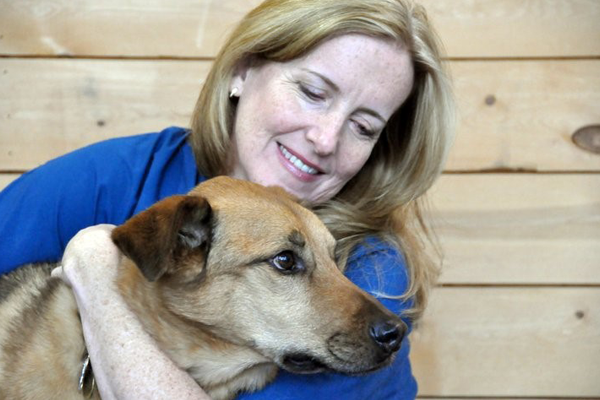Longevity for Dogs
by Monica Ginsburg | Jan 08, 2016
Go raw, and other tips from Dr. Barbara Royal

Want to cure what ails your aging pet? Start by using foods that pack a higher nutritional punch, says Dr. Barabara Royal, owner of The Royal Treatment Veterinary Center in Chicago and a pioneer in integrative veterinary medicine.
In her practice, Dr. Royal says she regularly sees how better nutrition can improve an animal’s overall health, reduce inflammation and ease symptoms of chronic diseases like arthritis. “Aging is not a disease,” she says. “You should be functional until you go.” Here’s what else she has to say about the importance of wild nutrition, food no-no’s and why your dog could use a massage, too.
Tell us what’s new in the field of antiaging and longevity for pets.
The latest news is actually the oldest: Better nutrition is the number one thing we can do to combat aging. Improve the diet and you’ll see an incredible amount of resilience, even in a very old body. I see lots of animals come in with chronic ear infections, arthritis, vision problems or animals who are overweight. Many noncommunicable diseases are entirely based on nutrition.
How can we improve our pets’ nutrition?
We need to look at things we already know from nature. The GI tract of a carnivore does not expect processed grains. I see dogs come in with what the owner says is a sensitive stomach. Dogs are scavengers. They should never have a sensitive stomach. Usually it’s the body saying it’s getting the wrong food. We’ve created a diet of carbohydrate rich food that is quick, convenient and easy to store, instead of food that will actually make a body healthy. By far the best option is raw food, which is closest to what dogs would eat in the wild. Prepared raw food come in a variety of meat sources and is packed with vitamins, minerals, and supplements to make a complete and balanced meal. They typically come in frozen patties and nuggets, which you thaw before feeding to your pet.
A good-quality canned food would be better than dry kibble. It’s not as highly processed and it doesn’t need the same carbohydrate level to keep it shelf-stable. The protein in canned food is closer to its original form, which makes it easier for the body to assimilate in an appropriate way.
And don’t forget to look at the label. The five foods to avoid– corn, soy, wheat, white potato and peanut butter–are off limits because they are carbs and inflammatory. They are present in many varieties of kibble and treats.
